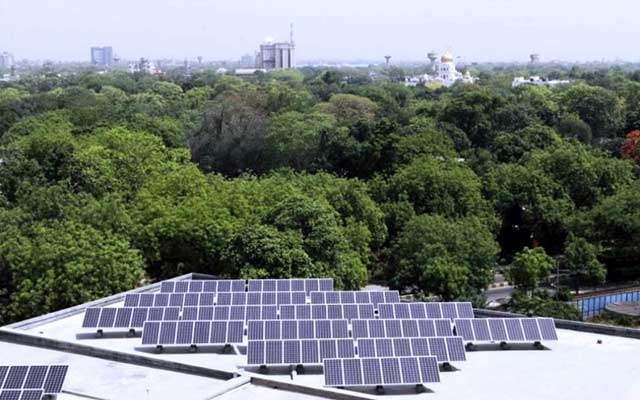Every summer, Delhi, the capital of India is reeling under power crisis. In 2016, the electricity demand touched 6,260 MW, double the demand of Mumbai and three times more than the demand of Chennai and Kolkata, in fact, the demand of the entire North East region is also less than half of capital’s requirement. Delhi can be a categorized as an energy guzzler state having potential to trigger large scale crisis in the key stakeholders. Considering this scenario, the Delhi government rolled out the Delhi Solar Energy Policy in September 2015, as a permanent fix to save the city.
The policy suggested installing solar rooftops to create a sustainable energy system with low gestation periods, low transmission and distribution losses, minimal creation of distribution infrastructure and peak load offset reducing cost for energy utilities, eventually transferring the benefits to the consumers.The government announced its commitment to make it mandatory for government and public institutions to install rooftop solar panels to be completed in 5 years. Interestingly, according to a government policy “Delhi’s peak demand curve broadly matches the generation curve of solar systems, which can therefore help reduce peak demands”. Despite these positive measures, the road-map to make Delhi go solar is still missing from the big picture, for example, how would the government begin implementing the installation of solar panels?
Delhi receives ample sunshine throughout the year, nearly 300 sunny days. According to Delhi government report, the rooftop space available for solar panels is estimated to be 31 km2 , generating a solar energy potential of 2.5 GW (annually approx. 3,500 million kWh). “Of this potential, 26% is in the government/public sector, 25% in commercial/ industrial sector, and 49% in domestic sector” the report claimed. A chunk of rooftop area is in the domestic sector, but very few households are using solar energy as an alternative. The key to mobilize private individuals is eluding the government. The government play a leadership role to formalize a framework to encourage citizens install solar panels and make them believe that it is reliable.
Smaller scale solar projects for each district
Delhi is divided in 11 districts; the 26% share of government institutions are scattered in these districts. To begin, first phase of solar rooftop panel installation should be limited to one district, for example, let us consider the south district, the agencies can map government building such as schools, colleges, government housing colonies, state government offices, flyovers, footbridge etc., The excess of power can be transferred back to the main distribution grid, therefore creating an energy surplus scenario for the energy utilities. The success achieved in the first phase would embolden the confidence of the execution authorities and contribute towards building a positive public perception to go solar. Once the government begins to utilize its infrastructure power energy during the day, it will create favorable market conditions, consequently solar energy tariffs will become cheaper than conventional energy tariffs.It will have a ripple effect on the commercial and domestic sector, as the government has set itself as an example to follow. The move will infuse confidence in private individuals, and together with an efficient and transparent policy framework, including relaxation on various taxes and charges related with generation and distribution of electricity, wherein citizen generate, consume and export surplus to the main grid; government would create favorable conditions to install solar rooftops.
Transformation of Delhi into a solar city would become a benchmark for governments of other cities across the country. The efficiency of solar energy policy framework could be replicated and building bylaws in cities could be amended accordingly, and it will position government as a facilitator encouraging easy adoption of solar power.The time ripe for government to begin implementing steps to make Delhi go solar and commence the journey on the road to sustainability.
Disclaimer: The opinions expressed in this article are the personal opinions of the author. The facts and opinions appearing in the article do not reflect the views of NEWSD and NEWSD does not assume any responsibility or liability for the same.


















